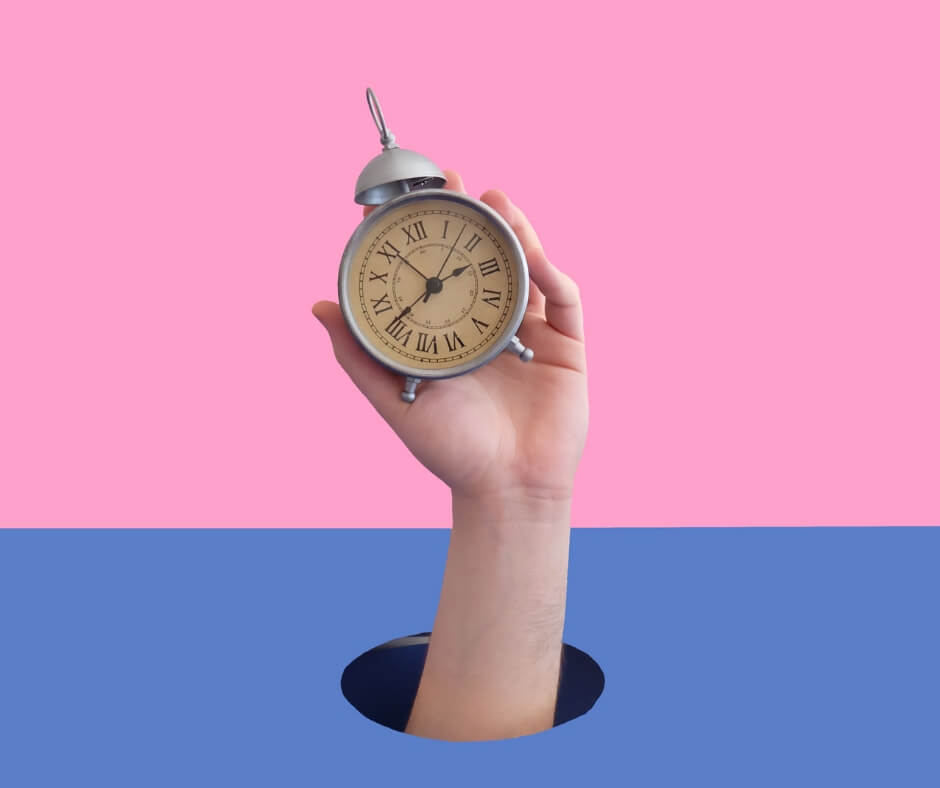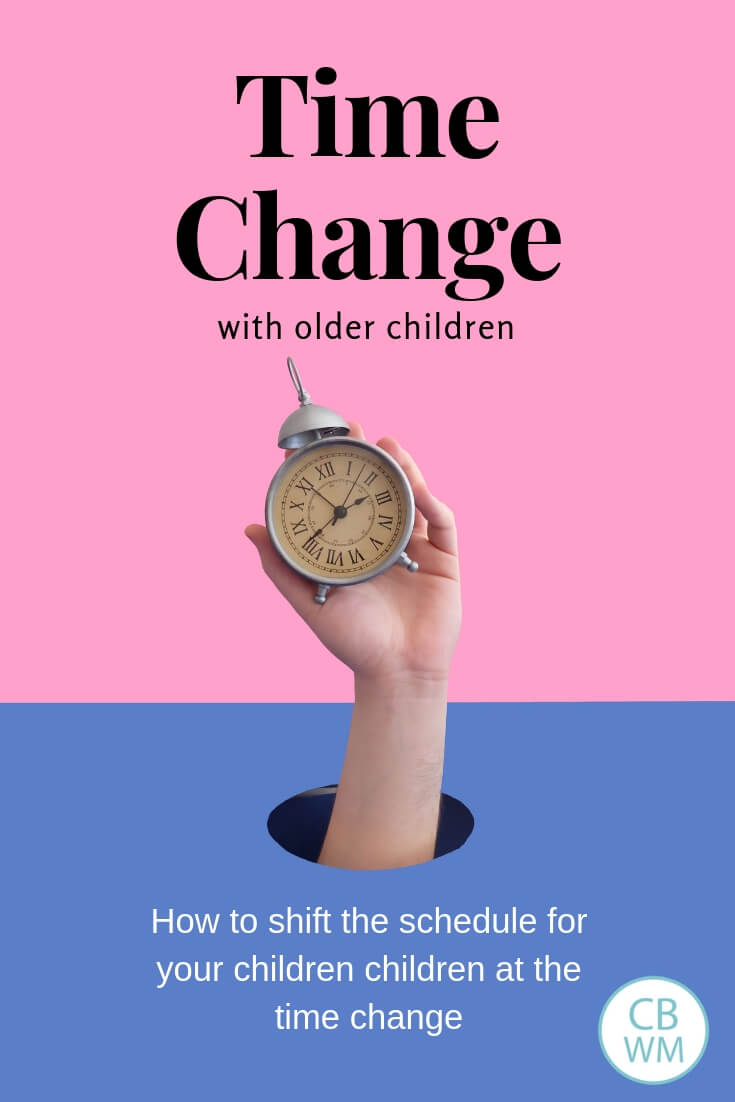How to do the Time Change with Older Children. When it is Daylight Savings Time or Daylight Savings Time ends, here are tips to transition your older children.

While most parents with older children have probably realized what the time change is like with an older child, I thought a post might be helpful for those who like to look ahead and for future time changes. For tips with the time change for younger children, read here.
The time change with an older child is a lot easier than it is with a baby. Your baby’s first time change will be the hardest, and the Fall time change is much harder than the Spring time change. If you are approaching your first time change or a time change with a baby younger than 12 months, be aware that it will be harder now than it is in the future.
Post Contents
Time Change Tips for Older Children
For my kids this fall, our transition has been really easy. This is what I have done:
Get kids up later in the morning
In the morning, they naturally were waking up at their normal time. I slowly pushed back the time I got them up. They are old enough that they will sit and entertain themselves in their beds until I get them (Brayden is close to 3.5 and Kaitlyn is 18 months). 1.5 weeks before the time change, we are 45 minutes past our normal waketime.
Keep a consistent daily schedule
After that, I pretty much keep the schedule the same. There have been a couple of days this week Kaitlyn has gotten down for her morning nap 15 minutes later than normal simply because we have to get our normal things in the morning. Bedtime stays the same, afternoon naps stay the same, etc. Once the time change actually happens (or perhaps as it gets closer), I will change the other items all at once.
Change schedule at your convenience
Older children are much more flexible than babies, so you can change things more at your convenience. I want them sleeping until the right time at the time change, but I don’t mind working with lunch, dinner, naps, and bedtime after the time change.
Take note that while Kaitlyn is this flexible at 18 months, Brayden wasn’t at that age. He was more flexible at 18 months old than he was as a baby, but not as flexible as Kaitlyn at 18 months old. Do what works for your individual child and family.
Conclusion
While you may have had a hard time with daylight savings time or daylight savings time ending (the time change) with a baby, it is much easier as your children get older. If you have a baby or an older child who still needs things more slow and steady, see my post on Shifting Your Schedule to slowly change the schedule in preparation for the time change.

